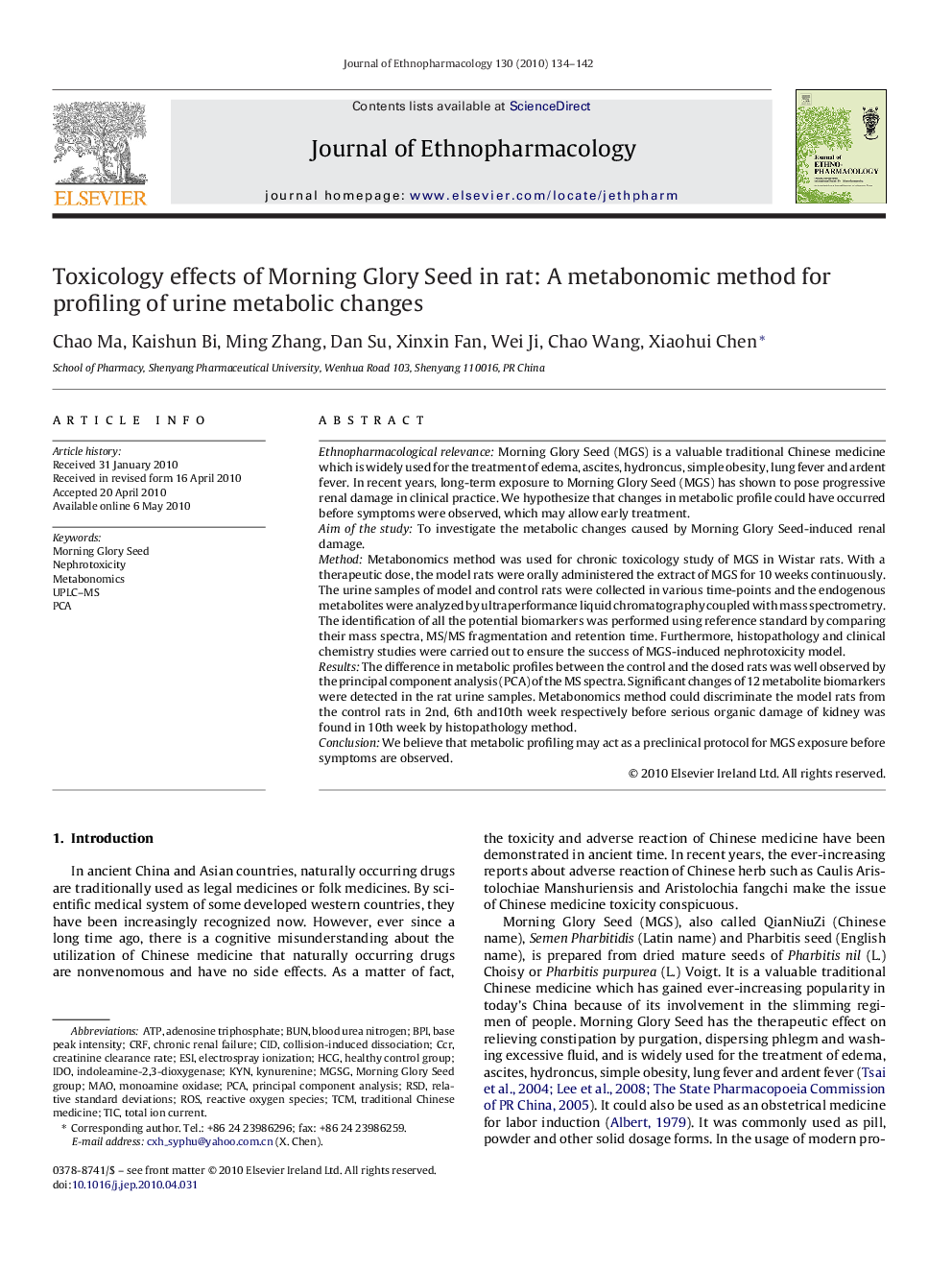| کد مقاله | کد نشریه | سال انتشار | مقاله انگلیسی | نسخه تمام متن |
|---|---|---|---|---|
| 2546438 | 1124026 | 2010 | 9 صفحه PDF | دانلود رایگان |

Ethnopharmacological relevanceMorning Glory Seed (MGS) is a valuable traditional Chinese medicine which is widely used for the treatment of edema, ascites, hydroncus, simple obesity, lung fever and ardent fever. In recent years, long-term exposure to Morning Glory Seed (MGS) has shown to pose progressive renal damage in clinical practice. We hypothesize that changes in metabolic profile could have occurred before symptoms were observed, which may allow early treatment.Aim of the studyTo investigate the metabolic changes caused by Morning Glory Seed-induced renal damage.MethodMetabonomics method was used for chronic toxicology study of MGS in Wistar rats. With a therapeutic dose, the model rats were orally administered the extract of MGS for 10 weeks continuously. The urine samples of model and control rats were collected in various time-points and the endogenous metabolites were analyzed by ultraperformance liquid chromatography coupled with mass spectrometry. The identification of all the potential biomarkers was performed using reference standard by comparing their mass spectra, MS/MS fragmentation and retention time. Furthermore, histopathology and clinical chemistry studies were carried out to ensure the success of MGS-induced nephrotoxicity model.ResultsThe difference in metabolic profiles between the control and the dosed rats was well observed by the principal component analysis (PCA) of the MS spectra. Significant changes of 12 metabolite biomarkers were detected in the rat urine samples. Metabonomics method could discriminate the model rats from the control rats in 2nd, 6th and10th week respectively before serious organic damage of kidney was found in 10th week by histopathology method.ConclusionWe believe that metabolic profiling may act as a preclinical protocol for MGS exposure before symptoms are observed.
Histopathological photomicrographs of rat kidney sections (400×).Figure optionsDownload as PowerPoint slide
Journal: Journal of Ethnopharmacology - Volume 130, Issue 1, 6 July 2010, Pages 134–142